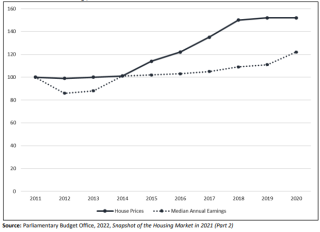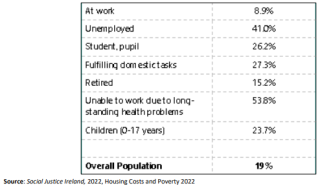Towards Wellbeing For All - Housing and Local Area

The Programme for Government acknowledged that our “existing measures of economic performance fail to measure matters such as damage to the environment and voluntary work. They also overlook equality of opportunity, distribution of wealth and income and only value public expenditure on the basis of the inputs used, not the outcomes achieved” and committed to introducing a series of indicators that would more accurately measure wellbeing to provide a “holistic view of how our society is faring”.
A ‘Wellbeing Dashboard’ was then developed to provide a snapshot of progress. In developing the Dashboard, the Inter-Departmental Working Group established a list of 35 indicators chosen to be balanced, add value or be of policy relevance, provide for aggregation and dis-aggregation, be readily available and of sufficient quality, and be internationally comparable.
So how are we doing? To gauge public opinion on what matters, and what should therefore be counted as an indicator of Well-being, Social Justice Ireland produced a survey asking people to rank a set of six indicators under each of the Well-being Framework dimensions from one to six, with one being the least important and six being the most important. The six indicators included the indicators used in the Dashboard and datasets readily available from the CSO and other reputable sources. This survey was circulated over the Summer months through our social media channels, our Weekly Digest, and our Members Bulletin. What follows is based on the responses to this survey and our policy proposals under each of the 11 dimensions.
Housing affordability has worsened in recent years, becoming less affordable between 2013 and 2019, before recovering slightly in 2020. However, it must be noted that an affordability calculation based on earnings in 2020 will be distorted as average earnings increased in response to layoffs in lower-paid jobs during the pandemic. Between 2012 and 2020 house prices increased by 77 per cent, compared to wage growth of 23 per cent in the same period (Chart 1) and asking prices have increased by 14.4 per cent in the year to December 2021, just 10.3 per cent below the 2007 peak.
Chart 1: House Price v Earnings, 2011 to 2020

After accounting for mortgage interest and rent payments on the home, the overall poverty rate in 2021 increased to 19 per cent or 952,185, including 286,242 children. This is almost one million people, one in five of the total population, living below the poverty line, 370,851 of which are in poverty because of housing costs (Table 1).
Table 1: At Risk of Poverty Rate after housing costs by economic status, 2021

Mortgage debt burden for those who are most at risk of homelessness refers to borrowers in mortgage arrears for over 10 years. The latest data indicates that 7,870 home mortgages were in arrears for over 10 years in June 2022 (5,860 primary dwelling house (PDH) mortgages and 2,010 buy to let (BTL)), an increase from 6,962 (4,701 PDH and 2,261 BTL) in June 2020. At a European level, Ireland had the second highest rate of arrears on mortgage or rent payments in the EU in 2021 (7 per cent), second only to Greece (8.5 per cent).
Policy Priorities
- Set a target of 20 per cent of all housing stock to be social housing and achieve this through building more social housing.
- Ensure that no State land suitable for housing is sold by a Local Authority or State agency.
- Address affordability through supply side initiatives such as new methodologies and procurement processes, rather than demand-side subsidies.
- Develop a spectrum of housing supports for people with disabilities. • Resource the enforcement of legislation targeting short-term lettings.
- Begin the process of reducing the reliance of the rental sector on Housing Subsidies.
- Introduce an Equity Scheme for Borrowers in Long Term Mortgage Arrears.
- Increase the provision of ‘Housing First’ accommodation for families in emergency accommodation, with wraparound supports.
- Introduce legislation to limit the length of time families can spend in Family Hubs and other emergency accommodation.
- Allow local authorities and Approved Housing Bodies pool resources to finance this increased supply in a sustainable way.